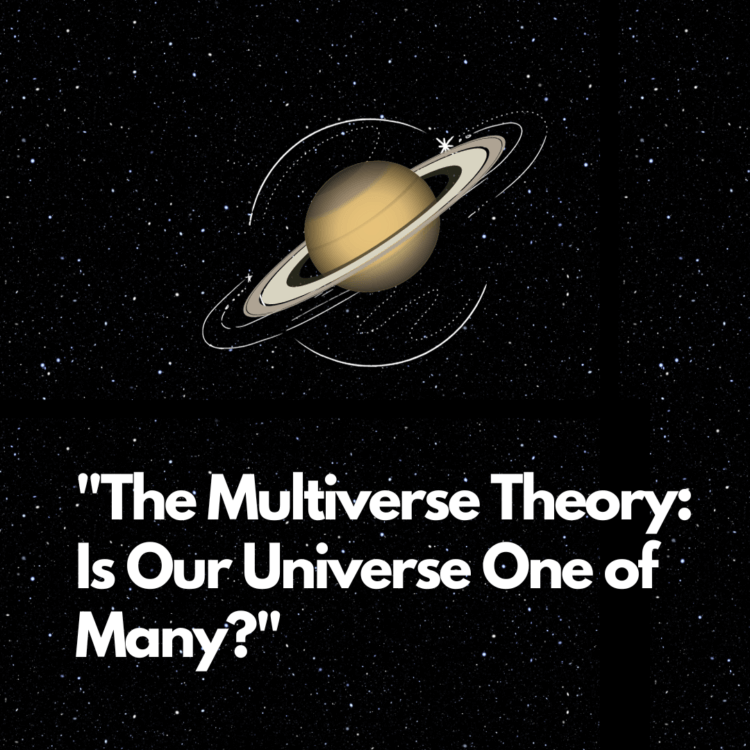As humans gaze into the vast expanse of the night sky, the question of our place in the universe has long been a source of fascination and contemplation. One theory that has captured the imagination of scientists and cosmologists is the Multiverse Theory. Could our universe be just one among countless others? In this blog, we delve into the intriguing concept of the multiverse and the implications it holds for our understanding of the cosmos.
Unraveling the Multiverse:
1. Theoretical Foundations:
The Multiverse Theory posits that our observable universe is not the only universe that exists. Instead, it suggests the existence of a multitude of universes, often referred to as “parallel” or “alternate” universes. This concept emerges from various branches of theoretical physics, including quantum mechanics and string theory.
2. Quantum Uncertainty and Many-Worlds Interpretation:
At the quantum level, particles exhibit behaviors of uncertainty and probability. The Many-Worlds Interpretation (MWI) proposes that every time a quantum event with multiple possible outcomes occurs, the universe splits into different branches, each realizing one of the potential outcomes. In essence, every conceivable outcome of every quantum event creates a separate, divergent universe.
3. Cosmic Inflation and Bubble Universes:
Another aspect of the Multiverse Theory is connected to the concept of cosmic inflation, a rapid expansion of the early universe. In this scenario, different regions of space stop inflating at different times, creating “bubble” universes within an overarching multiverse. Each bubble universe could have its own distinct physical properties.
4. String Theory and Extra Dimensions:
String theory, a theoretical framework in particle physics, proposes that the fundamental building blocks of the universe are not point-like particles but tiny, vibrating strings. This theory suggests the existence of additional dimensions beyond the familiar three spatial dimensions and one temporal dimension. The varying configurations of these extra dimensions could give rise to different universes within the multiverse.
Exploring the Implications:
1. Beyond the Limits of Observable Universe:
The concept of a multiverse challenges the notion that the observable universe is the entirety of cosmic reality. If the multiverse theory holds true, there are realms beyond our observational limits, each with its own unique physical constants, laws of physics, and perhaps even different forms of life.
2. Anthropic Principle:
The multiverse theory is sometimes invoked to explain the fine-tuning of the fundamental constants of nature that allow for the existence of life as we know it. The anthropic principle suggests that our universe possesses the conditions necessary for life because, in a vast multiverse, only those regions with suitable conditions would give rise to observers.
3. Quantum Mechanics and Schrödinger's Cat:
The Many-Worlds Interpretation, a key component of the multiverse theory, challenges our intuitive understanding of quantum mechanics. According to MWI, all possible outcomes of a quantum event occur in separate, non-communicating branches of the universe. This interpretation resolves some of the paradoxes in quantum mechanics, such as Schrödinger’s cat being both alive and dead until observed.
Contemplating the Unverifiable:
1. Experimental Challenges:
While the multiverse theory offers elegant solutions to certain cosmological puzzles, it currently remains largely unverifiable through direct observation. The vastness of the multiverse, if it exists, presents challenges in terms of experimental confirmation or falsification.
2. Philosophical Implications:
The multiverse theory raises profound philosophical questions about the nature of reality, existence, and the role of observation in shaping the universe. It challenges our traditional notions of a single, objective reality in favor of a complex web of interconnected and divergent possibilities.
Conclusion:
The Multiverse Theory stands at the intersection of theoretical physics, quantum mechanics, and cosmology, inviting us to contemplate the vastness of cosmic possibilities. While currently beyond the reach of direct empirical confirmation, the concept challenges our understanding of the universe and invites us to explore the boundaries of human knowledge. As scientists continue to push the frontiers of theoretical physics, the multiverse remains a captivating hypothesis that sparks the imagination and fuels our collective quest to unravel the mysteries of the cosmos.










No Comments
Leave Comment